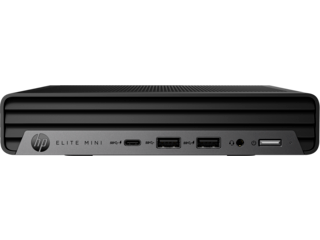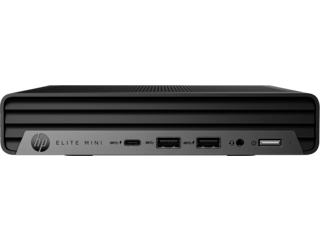Each time you power on your PC, the BIOS (Basic Input/Output System) is the first operation to load your operating system and all of the personal settings that make your
computer unique. Whether you need to
update your BIOS to support new hardware, troubleshoot issues, or customize your system configuration, knowing how to enter BIOS on Windows 10 or 11 PCs is an essential skill.
What is BIOS?
BIOS is the built-in core processor software responsible for booting up your system. As your PC’s most important startup program, it performs a POST (Power-On Self-Test) to ensure all connected devices are operating correctly before loading the operating system.
BIOS also handles low-level system functions like:
- Booting
- Hardware initialization
- System clock and time
- Hardware component configuration
- System security
On newer PCs, UEFI (Unified Extensible Firmware Interface) has replaced traditional BIOS. UEFI is more advanced and addresses limitations of the old BIOS, handling drives over 2.1TB and running in 32-bit or 64-bit modes.
Why Access BIOS Setup via Advanced Startup?
There are several reasons you may need to enter BIOS setup:
- Change the boot order to boot from a USB drive or DVD
- Update BIOS to support new hardware
- Overclock the CPU or enable XMP profiles for faster RAM
- Troubleshoot hardware issues
- Restore default settings
- Set a BIOS password for security
Entering the BIOS is a crucial step for performing the listed actions, as it allows users to access and modify the system’s fundamental settings.
⚡ Recommended Solution - Advanced BIOS Management
Pro BIOS Features!
HP Elite Mini 800 G9 PC
- Windows 11 Pro with enhanced BIOS features
- Intel® Core™ i3 for reliable system control
- Space-saving design with full customization
Windows 11 Pro | Enhanced BIOS | Compact design
HP BIOS Support Resources
Access these HP support resources for detailed guidance on BIOS settings, troubleshooting, and system recovery options.
How to Enter BIOS Setup on Windows 10 and 11 PCs
There are two primary methods to access BIOS on modern Windows computers, and understanding how to access the BIOS is crucial for troubleshooting and configuring your PC’s firmware settings.
Method 1 involves restarting your computer and pressing a specific key during the boot process. This key varies by manufacturer but is typically one of the following: F1, F2, F10, DEL, or ESC. It’s essential to press the correct key as soon as the manufacturer’s logo appears, but before the operating system loads, to successfully enter the BIOS setup.
Method 2 leverages the advanced startup options within Windows to navigate to the BIOS without needing to hit a specific key at boot. To use advanced startup to access BIOS through Windows settings, follow these steps:
- Open Settings by clicking the Start menu and selecting the gear icon.
- Go to Update & Security > Recovery.
- Under Advanced startup, click “Restart now.” The computer will reboot to a special menu.
- Choose Troubleshoot > Advanced options > UEFI Firmware Settings.
- Click UEFI firmware settings, then click Restart to change the settings in the BIOS.
This method is particularly useful for systems where the fast boot feature makes it difficult to use the traditional key press method at startup.
Method 1: Use the BIOS Key During Startup
- Restart your PC.
- When the manufacturer logo appears, press the designated BIOS key repeatedly until you enter BIOS setup. Common BIOS keys by brand include:
- Acer: F2 or DEL
- ASUS: F2 or DEL
- Dell: F2 or F12
- HP: ESC or F10
- Lenovo: F2 or Fn + F2
- MSI: DEL
- Use the arrow keys to navigate the BIOS menu.
Some PCs boot too quickly to hit the BIOS key in time. In this case, move on to method 2 below or try disabling Fast Startup in Windows.
Method 2: Use Windows Advanced Start Menu to Access UEFI Firmware Settings
- Click Start and select Settings.
- Go to Update & Security.
- Under Recovery, click Restart now.
- On the Choose an Option screen, select Troubleshoot.
- Click Advanced options.
- Select UEFI Firmware Settings.
- Click Restart to reboot into BIOS.
Troubleshooting BIOS Access Issues
If neither of the above methods work, try these troubleshooting tips:
- Disable Fast Startup in Windows Power Options
- Use an emergency boot disk to access BIOS if your PC won’t boot normally
- Clear the CMOS to reset BIOS settings to default
- Remove the CMOS battery for a few minutes to reset settings
- Contact HP Customer Support for further assistance
For emergency boot situations, consider keeping a USB emergency boot drive on hand. If you’re moving to a new PC, learning
how to move your Windows drive to a new PC can help ensure seamless transitions without data loss.
Intel® Core™ i3 processor
8GB memory
256GB SSD storage
3-year warranty included
Intel® Core™ i5 processor
16GB memory standard
512GB M.2 SSD
Workstation reliability
AMD Ryzen™ 7 processor
Compact mini design
Advanced BIOS options
Enterprise features
Navigating BIOS Menus
Once you’ve entered BIOS setup, you’ll use the arrow keys to move between menus and settings. Typical menus include:
- Main: Basic system info like date, time, and BIOS version
- Advanced: Configure hardware components and features like CPU, USB ports, and virtualization
- Boot: Set boot order and enable/disable fast boot and secure boot
- Security: Set passwords and configure TPM
- Exit: Save or discard changes and exit BIOS
Be cautious when modifying BIOS settings as incorrect changes could cause system instability or prevent your PC from booting properly. If you’re unsure about any settings, it’s best to leave them at default.
Understanding how to access BIOS empowers you to make low-level changes to customize and optimize your PC. While you should avoid changing settings unless you’re sure about the outcome, getting to know BIOS puts you in full control when you need it. With the information and methods provided here, you’re well-equipped to enter BIOS setup on your Windows computer when necessary.
About the Author
Tulie Finley-Moise is a contributing writer for HP® Tech Takes. Tulie is a digital content creation specialist based in San Diego, California with a passion for the latest tech and digital media news.






















